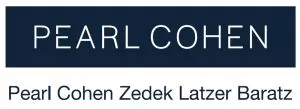On March 27, 2020, President Donald Trump signed into law the CARES Act1 (the "Act") as an attempt to provide economic assistance and relief for individuals and businesses that have been impacted by the coronavirus (COVID-19) outbreak. In addition to the tax benefits included in the Act, the Act also authorizes the Small Business Administration ("SBA") to provide loan guarantees for loan commitments under the SBA's 7(a) (the "SBA7(a)") program and provides for an SBA loan forgiveness program. The below discusses the SBA and the major tax provisions in the Act.
SBA Loans
Currently, eligibility for SBA's 7(a) loan program, is for small business concern. A "business concern" is defined2 as a business entity organized for profit, with a place of business located in the U.S., which operates primarily within the U.S. or which makes a significant contribution to the U.S. economy through payment of taxes or use of American products, materials, or labor. The SBA classifies businesses based on number of employees or average annual gross receipts.
Under the Act, any business would be eligible to receive an SBA7(a) loan if the business employs not more than 500 employees per physical location. The Act provides for additional certain criteria depending on the industry the business operates in. The Act expands the SBA loan program to help eligible businesses pay payroll (including paid sick or medical leave), continuation of health care benefits during medical, or family leave, rent, utilities, interest on mortgage, insurance premiums, and other operational costs.
The Act allows the SBA, either directly or in cooperation with the private banks, to provide SBA7(a) Loans to businesses in an amount that is the lesser of 2.5 times the business' average monthly payroll cost, or $10,000,000. The interest rate for any SBA7(a) Loan will not exceed 4% and no collateral or personal guarantees will be required from the business or from its owners. The SBA7(a) Loans will be backed by the SBA so that the government will guarantee 100% of all SBA7(a) Loans through the end of 2020, following which the guarantee percentages will return to 75% for loans above $150,000 and 85% for loans of $150,000 or less.
The SBA7(a) Loans, with the applicable modification,3 are expected to be forgiven in the amount that is equal to the payroll costs, mortgage interest payments, rent, and utilities incurred or paid by a business during the 8-week period beginning on the date of the origination of an SBA7(a) loan. The Act also provided that the loan forgiveness amount will not result in a discharge of indebtedness taxable income under Section 108 of the Internal Revenue Code.
Tax Related Changes
Payroll Tax Delay
In addition to the federal and state withholding tax required to be made by any employer, with respect to its employees' wages, employers are required to make timely payments of certain employment taxes (FICA). The employer is responsible for paying 6.2% of the wages as an employer portion of social security tax and an additional 1.45% of Medicare taxes. The Act allows employers (and self-employed individuals) to defer paying their portion of the social security payroll tax otherwise due. The deferral period, which is the period for which social security tax is calculated for, starts on the date the Act was enacted and will end on December 31, 2020. The amounts deferred will ultimately have to be paid in two installments. Half of the deferred amount of payroll taxes from 2020 will be due December 31, 2021, with the remaining half due December 31, 2022. Note however that, employers who received SBA7(a) loans that were forgiven under the Act are not eligible for the payroll tax deferral.
Employee Retention Payroll Tax Credit
The Act provides a refundable payroll tax credit for eligible employers for 50% of qualified wages (including health benefits) paid to employees during the COVID-19 pandemic. Eligible employers are any employers whose business was fully or partially suspended in 2020 due to COVID-19 or that experienced a significant decline in gross receipts. The Act provides that a significant decline in gross receipts is when a business's gross receipts in a calendar quarter in 2020 are less than 50% compared to the gross receipts of the same quarter the previous year.
The determination of qualified wages of employers varies depending on whether the employer has more or less than 100 full-time employees. For employers with more than 100 full-time employees, qualified wages are those paid to employees when they are not providing services due to the COVID-19. For those with 100 or fewer full-time employees, all wages qualify for the credit.
The credit amount an eligible employer is entitled to, with respect to qualified wage, equals to 50% of the qualified wages of an employee, with the wage amount limited to $10,000 per employee.
Alternative Minimum Tax Credit Refunds
The Tax Cuts and Jobs Act (TCJA) eliminated the applicability of the Alternative Tax Regime on corporate taxpayers. Under TCJA, a corporation that accumulated AMT tax credits pre-TCJA and otherwise had available to carry forward were refundable in 2018 through 2022. The amount of refund was limited for each taxable year to 50% percent of the balance of the unrefunded AMT. The Act modifies and accelerates the refundable credit and provides that a corporation can either elect to take the entire refundable amount in 2018, or to take the entire amount in 2018 and 2019.
The legislation specifies that, exclusively for purposes of the refundable AMT credit, a taxpayer may file an application for a tentative refund with the Internal Revenue Service (IRS), which then must review the application and, if appropriate, issue the related refund within 90 days. A tentative refund would likely be paid out before any necessary review by the Joint Committee on Taxation, as such reviews are required for large ($5 million or more) corporate refunds and can take weeks.
Net Operating Loss (NOL)
TCJA enacted into law in 2017, applicable to taxable years starting after December 31, 2017, limited the ability of the taxpayer to carry back their net operating losses. The TCJA changed the law so that NOLs could not have been carried back at all. Prior to TCJA, companies with NOLs could carryback losses to offset prior year income (resulting in a cash refund to the company). Pursuant to the Act, any NOL arising in tax years 2018, 2019, and 2020 can be carried back to each of the five taxable years preceding the loss year. Consequently, companies with unused losses arising in 2018, 2019, or 2020 that paid tax in one or more of the five preceding tax years will be able to immediately file amended returns seeking a refund of taxes paid.
Additionally, TCJA has limited the amount of NOLs that can be used in any profitable year. The NOL deduction was limited to 80% of the taxpayer's taxable income. The Act temporarily repeals the 80% profit limitation for tax years 2018 through 2020 (phasing out in 2021), allowing taxpayers to claim the full NOLs (including the carryback described above), and providing a potential cash refund in cases where companies can amend prior year returns to claim a full deduction.
Interest Expense Deduction
TCJA provides for a limitation on interest deduction for corporations. Under the TCJA a corporation is only allowed to deduct interest expense it pays on loans to the extent the amount of such interest expense does not exceed 30% of the company's EBITDA (AGI under the TCJA). Under the Act, and applicable only to tax years 2019 and 2020, the 30% of EBITDA limit is increased to 50% percent of the company's adjusted taxable income.
Footnotes
1 Coronavirus Aid, Relief, and Economic Security Act (CARES Act), can be found here.
2 13 CFR Section 121.105.
3 The amount of loan forgiveness will also be reduced by the amount of any reduction in total salary or wages of any employee during the 8-week period beginning on the date of the origination of an SBA7(a) loan that is in excess of 25% of the total salary or wages during the most recent full quarter during which the employee was employed before the such 8-week period.
The content of this article is intended to provide a general guide to the subject matter. Specialist advice should be sought about your specific circumstances.




